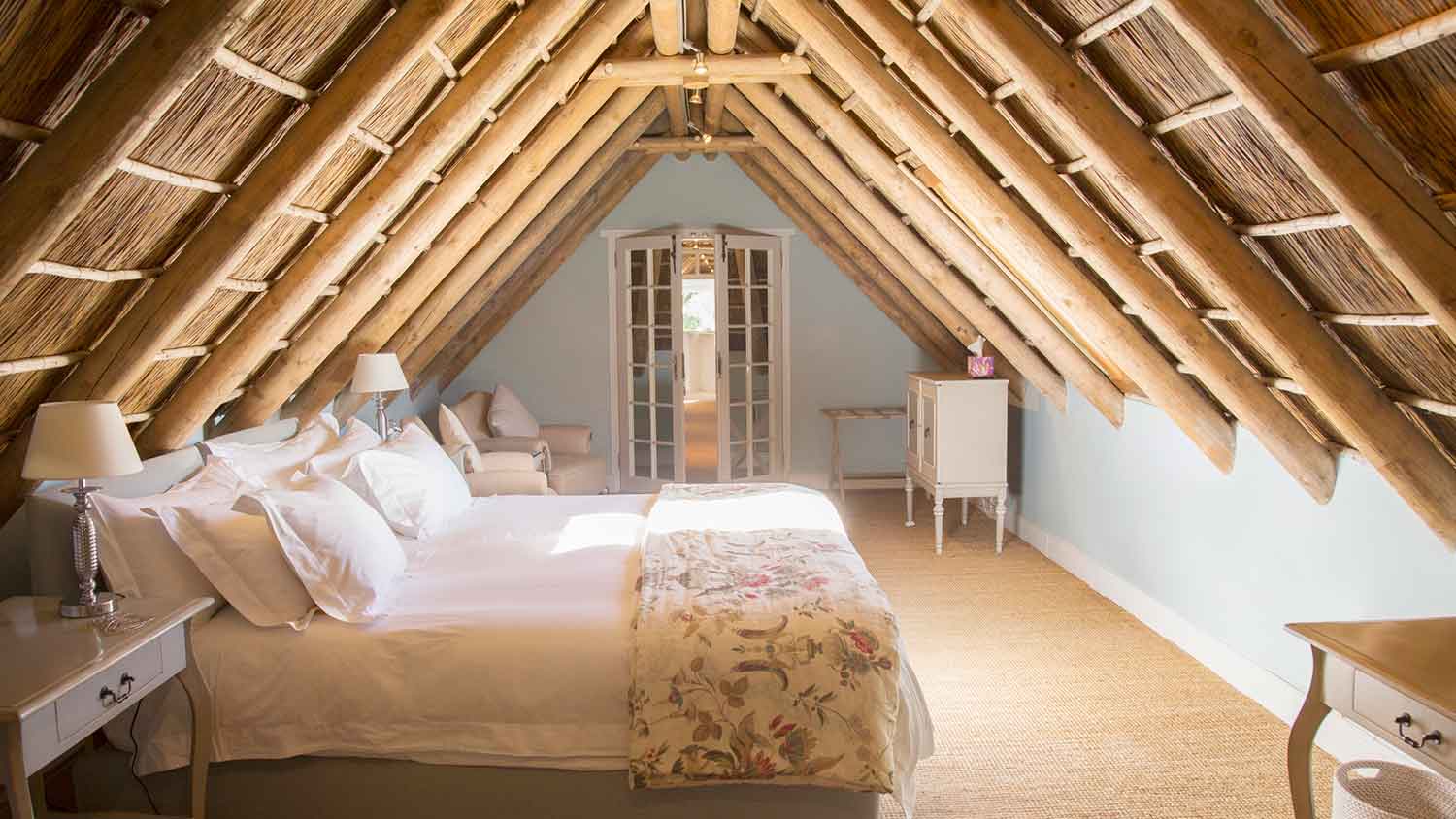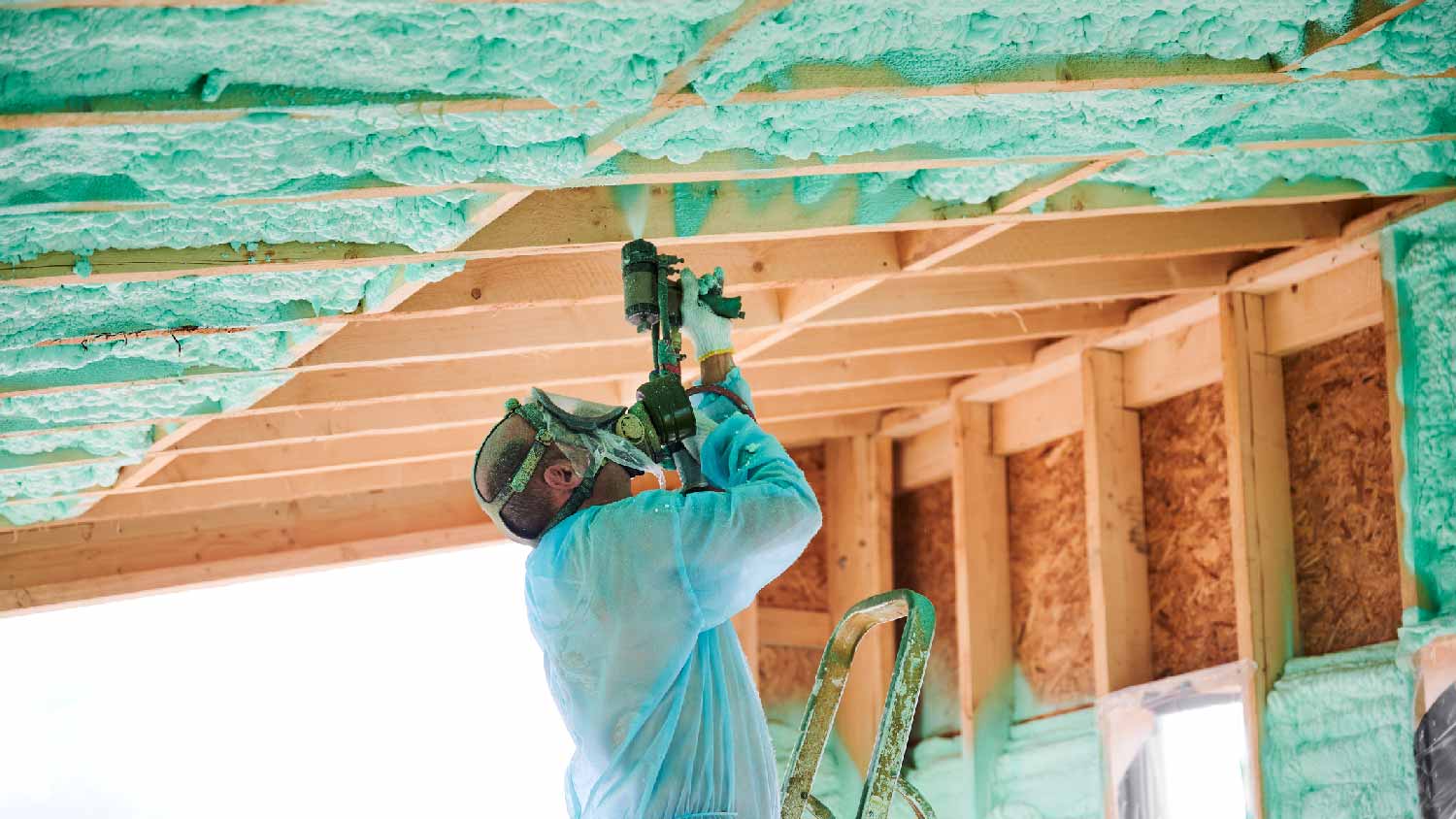Hot Roof vs. Cold Roof: What’s the Difference?
Learn about the hottest trends in roof insulation


A hot roof is insulated on top of the rafters, keeping the attic space’s temperature regulated.
A cold roof has insulation between the rafters and additional ventilation in the space under the roof.
Hot roofs are the most energy-efficient option and create usable attic space.
Cold roofs help prevent ice dams in areas with frequent snow and ice.
Installing a new roof involves many choices, including how to insulate it. You may not be familiar with the terms “hot roof” and “cold roof,” but knowing the difference between these two insulation systems can help you keep your home comfortable all year long.

Hot Roof vs. Cold Roof: Key Differences
The main difference between a hot roof and a cold roof is where the insulation is located. In a hot roof, the insulation sits on top of the rafters, under the roof sheathing or decking. A cold roof has insulation between the rafters, leaving uninsulated vertical space between the rafters and the roof sheathing. Cold roofs are the more traditional style of roof insulation, but hot roofs have recently gained popularity, particularly in new-build homes.
What is a Hot Roof?

A hot roof, sometimes called a “warm roof,” has insulation installed on top of the rafters, leaving the entire space under the roof structure insulated. A hot roof doesn’t require additional ventilation, and creates usable attic space because the entire area is insulated and remains a more comfortable temperature throughout the year.
| Pros | Cons |
|---|---|
| Energy-efficient | Higher upfront cost |
| Easier repairs | Limited insulation options |
| Creates usable attic space | May encourage condensation and mold growth |
Best for:
Homes in climates that don’t see frequent snow or ice
Homeowners who want usable attic space
Homeowners who prefer the most energy-efficient option
Pros of a Hot Roof
A hot roof is the most energy-efficient roofing insulation choice as it prevents heat loss in the area underneath the roof. Because the area under the rafters remains around the same temperature as the rest of the house, this space can be used in colder weather.
Hot roof repairs are also easier than cold roof repairs since a hot roof has more layers of material between the roofing material and roof sheathing. Replacing damaged sheathing is a complex process, so the more protection between the sheathing and the elements, the less likely it is to need repairs.
Be sure to hire a roofer with experience repairing hot roofs, as they’re less common than cold roofs.
Cons of a Hot Roof
Hot roofs cost more to install than cold roofs, requiring additional materials like vapor barriers and secondary roof sheathing for support. Hot roofs also require spray foam insulation, which is more expensive than other kinds of insulation.
The lack of ventilation in a hot roof can be an advantage if the roof is installed with a fully airtight seal. Over time, however, a deteriorating seal can lead to condensation and mold growth since there’s no way to ventilate the area.
Like your kitchen or bathroom, your roof needs ventilation to extend its life span and control temperatures. Proper roof ventilation helps reduce HVAC costs and prevents ice dams and moisture damage. A roof repair pro can assess your roof and make recommendations.
What is a Cold Roof?

A cold roof, not to be confused with a reflective “cool roof,” is a traditional style of insulating a roof with insulation placed between the rafters, resulting in vented, uninsulated space between the rafters and the underside of the roof. Cold roofs are often found in areas that experience frequent snow and ice.
| Pros | Cons |
|---|---|
| Less expensive | Less energy-efficient |
| More insulation options | Difficult to repair |
| Discourages condensation | Requires added ventilation |
Best for:
Flat or low-sloped roofs
Budget-conscious homeowners
Homes prone to ice dams
Pros of a Cold Roof
A cold roof is a more budget-friendly option than a hot roof. Its installation process is simpler and uses fewer materials, and there are more options when it comes to the type of insulation you use. Because cold roofs must have added roof vents, condensation and mold growth are less likely.
Cold roofs are also beneficial for preventing ice dams, which occur when snow or ice melts and then refreezes at the edge of the roof, forcing moisture under the roofing material and into the home’s walls.
Cons of a Cold Roof
The uninsulated space between the rafters and the roof sheathing can lead to heat loss and make a cold roof less energy-efficient than a hot roof. The lack of insulation also means that any attic space will be unusable as living space.
Cold roofs are more difficult to repair since the roof sheathing isn’t protected by as many layers of roofing materials. Sheathing is prone to water damage and warping, and replacing it is often part of a total roof replacement, which can be very costly.
Hot Roof vs. Cold Roof

Price: Cold Roof
The upfront cost of installing a cold roof is less expensive than a hot roof since it uses fewer materials and more traditional installation methods. Hot roofs require more expensive spray foam insulation, while cold roofs can use less costly insulation options like fiberglass.
Energy Efficiency: Hot Roof
With a hot roof, the entire space under the roof is insulated and kept at a consistent temperature, so you won’t experience heat loss above the rafters like you would with a cold roof. Over time, this can lead to reduced heating bills.
Ease of Repair: Hot Roof
A hot roof is easier to repair than a cold roof since the elements need to penetrate additional layers of material before damaging the roof sheathing or structural elements. A local roofer with experience repairing hot roofs can repair or replace the damaged material.
Design Adaptability: Hot Roof
The insulated space created by hot roofs opens up various options for using the attic space that aren’t possible with cold roofs. A hot roof will extend the height of the house due to the extra layers on top of the rafters, but makes up for that added height with increased interior space.
Ice Dam Prevention: Cold Roof
The ventilation required for a cold roof keeps the air beneath the roof cooler, preventing rapid snow and ice melting and refreezing. The cycle of melting and refreezing causes ice dams, which can seriously damage your roof and exterior walls. The less extreme temperature difference between the underside and the surface of the roof helps snow and ice melt consistently without refreezing.
Insulation Options: Cold Roof
Hot roofs require spray foam insulation, which provides effective temperature regulation but is more expensive than other insulation options. A cold roof can use any of several types of insulation, including more budget-friendly choices.





- Roofers
- Metal Roofing
- Roof Repair
- Roof Inspection
- Vinyl Siding Repair Contractors
- Flat Roofing Companies
- Commercial Roofing
- Emergency Roofing Companies
- Leaky Roof Repair
- Metal Roof Repair
- Business Roof Repair
- Flat Roof Repair
- Tile Roof Repair
- Slate Roofers
- Rubber Roofers
- Roofing & Siding
- Metal Roof Installation
- Affordable Roofing
- Roof Sealing
- Attic Ventilation Contractors
- 9 Warning Signs You Need a New Roof
- Explore the Pros and Cons of Roof Cleaning
- Roofing Terms and Definitions Every Homeowner Needs to Know
- 9 Ways to Help Your Roof Last Longer
- 12 Parts of Roof Framing You Should Know
- How to Build a Roof For Your Home, From Start to Finish
- 6 Benefits of Energy-Efficient Roofs
- Protect Your Roof From the Snow With These Roof Winterizing Tips
- Roof Inspection Guide: Everything You Should Know
- Roof Painting: Everything to Know About Painting Your Home’s Roof











